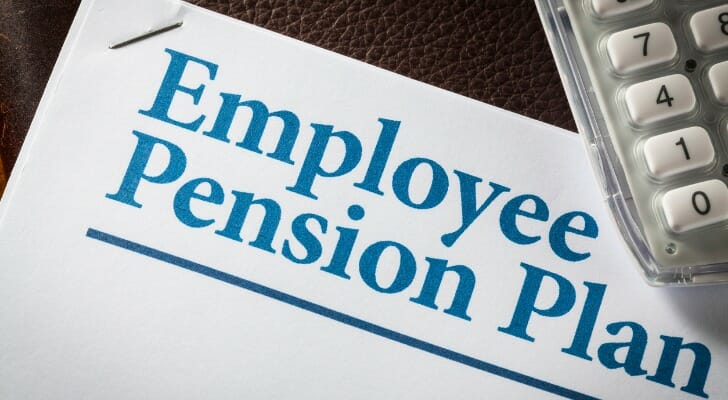The Virginia Retirement System, or VRS, is the state agency that administers the pension fund for state employees. The pension fund is the 19th largest in the U.S., and paid out roughly $5 billion in benefits to about 214,000 retirees and their beneficiaries in 2019. VRS also manages life insurance benefits, long-term care programs, severance benefits, military leave benefits and the 457 deferred compensation plan. If you are nearing retirement and need help planning your finances, consider working with a financial advisor.
Types of Retirement Systems in Virginia
In general, VRS covers full-time permanent, salaried employees. It also covers public college and university faculty and employees, school division employees and employees of VRS-participating political subdivisions.
Additionally, some part-time permanent, salaried state employees are members. Your plan depends on your exact position. Beyond that, your age, average final compensation and accrued service credit will determine your benefits in the Virginia Retirement System. The table below shows the different plans in the Virginia retirement system and the requirements for eligible employees.
Virginia Retirement Systems
| Plan Title | Eligible Employees |
| State Employees, Teachers and General Political Subdivision Employees | – Full-time/salaried employees and teachers at state universities, colleges and local public schools |
| State Police Officers’ Retirement System (SPORS) | – State police officers |
| Political Subdivision Employees Eligible for Enhanced Hazardous Duty Coverage | – Local police, firefighters and emergency technicians – Sheriffs and deputy sheriffs – Superintendents and officers at regional jails |
| Virginia Law Officers’ Retirement System (VaLORS) | – Capital police, conservation police, campus police, state correctional, state juvenile correctional, state parole, marine resource and commercial vehicle enforcement officers – Alcoholic Beverage Control (ABC) special agents |
| Judicial Retirement System (JRS) | – Elected or appointed judge of the State Corporation Commission or the Virginia Workers’ Compensation Commission – Elected or appointed commissioner of the State Corporation Commission or the Virginia Workers’ Compensation Commission |
| Hybrid Retirement Plan | – State employees, school division employees, political subdivision employees and appointed or elected judges beginning a term on or after 1/1/2014 – Must have no past service credit and have become a member on or after 1/1/2014 |
| Optional Retirement Plan for School Superintendents (ORPSS) | – New school superintendents – Those hired prior to 7/1/2010 or anyone who’s re-hired with past service credit from before 7/1/2010 – Employees hired on or after 7/1/2010 with no service credit |
| Optional Retirement Plan for Political Appointees (ORPPA) | |
| Optional Retirement Plan for Higher Education (ORPHE) | – Full- and part-time teaching, administrative and research staff at participating public institutions – Presidents at participating higher education institutions – Chancellors and presidents with the Virginia Community College System |
| Commonwealth of Virginia 457 Deferred Compensation Plan | – Both waged and salaried employees of state agencies, school divisions and political subdivisions |
Overview of Virginia’s Retirement Systems

Benefits and rules for the first four systems listed below depending on whether you are part of “Plan 1” or “Plan 2.” Play 1 includes employees hired/rehired prior to 7/1/2010 OR has at least five years of service credit by 1/1/2013. Plan 2 includes employees hired/rehired prior to 7/1/2010, but do not have at least five years of service credit by 1/1/2013 OR hired/rehired from 7/1/2010 to 12/31/2013.
State Employees, Teachers and General Political Subdivision Employees: This plan comes in two variations: Plan 1 and Plan 2. They’re largely similar, with one distinct difference in how monthly retirement distributions are calculated. Plan 1 takes an average from 36 months of your highest creditable pay. Plan 2 increases that to 60 months.
State Police Officers’ Retirement System (SPORS): Monthly pension payments are based on the average of 36 or 60 months of your highest compensation for Plan 1 and Plan 2, respectively. For holding a “hazardous” job, you have access to a 1.85% retirement multiplier.
Political Subdivision Employees Eligible for Enhanced Hazardous Duty Coverage: This includes benefits that are very much in line with what the State Employees, Teachers and General Political Subdivision Employees plan to provide. For holding a hazardous profession, you will receive distribution multipliers.
Virginia Law Officers’ Retirement System (VaLORS): Pension payments through VaLORS are determined by service time and average final compensation – 36 months for Plan 1 and 60 months for Plan 2. You also have access to disability coverage, long-term care benefits, life insurance and other financial benefits for your beneficiaries.
Judicial Retirement System (JRS): Depending on a few time-related factors, JRS members are either in Plan 1, Plan 2 or the Hybrid Retirement Plan. Plan 1 and Plan 2 are nearly identical, with just a few differences in the way your monthly retirement payments are computed. As its name suggests, the hybrid plan combines the perks of a defined benefit plan and a defined contribution plan. This gives participants much more choice over their retirement plan investments.
- JRS Plan 1: Membership date is before 7/1/2010, vested prior to 1/1/2013, have not taken a refund and appointed/elected to an original term before 1/1/2014
- JRS Plan 2: Membership date is from 7/1/2010 to 12/31/2013, have not taken a refund and appointed/elected to an original term before 1/1/2014
- Also covered under Plan 2 if the membership date is before 1/1/2010, the vesting date before 1/1/2013 and the appointed/elected to an original term before 1/1/2014
- JRS Hybrid Retirement Plan: Appointed/elected to an original term on or after 1/1/2014
Optional Retirement Plan for School Superintendents (ORPSS): Should you choose the ORPSS, you will be joining a defined contribution plan. As with many other retirement plans, your investment choices include exchange-traded funds (ETFs), mutual funds and individual securities.
Optional Retirement Plan for Political Appointees (ORPPA): The ORPPA has many of the same benefits as the ORPSS. Again, investment options include mutual funds, ETFs and individual securities. You choose your investments once you accrue $2,500 in savings.
Optional Retirement Plan for Higher Education (ORP): The ORP provides access to health, long-term care and life insurance and allows for military or educational leave if necessary. Also, you are eligible to join the Commonwealth of Virginia 457 Deferred Compensation Plan (below).
457 Deferred Compensation Plan: With the Commonwealth of Virginia’s 457 plan, you can choose to make tax-deferred contributions or post-tax (Roth) contributions to your account. One big plus: there is no federal penalty for taking early retirement payments.
Retirement Taxes in Virginia
There are taxes involved with the retirement plans offered by the state of Virginia. Pensions earned in the state of Virginia are subject to both federal income and state income taxes. Here’s how each works.
Federal Taxes
Once you retire and start receiving your pension, payments are subject to federal income tax. The amount that you pay will depend on your typical tax bracket. As with your paycheck, you can have taxes withheld from each check. Alternatively, you can pay estimated taxes every quarter.
State Taxes
In the Virginia Retirement System, pensions earned in Virginia are subject to state income taxes. But you can deduct as much as $12,000 on your return if you are at least 65 years old. Also, you must make less than $50,000 as a single filer or $75,000 as a joint filer.
Current Financial Health of the Virginia Retirement System

The Virginia Retirement System is the 17th largest pension system in the country and the 42nd largest in the world. It consists of more than 750,000 current and former public employees and their beneficiaries. Current members include more than 148,000 teachers, 111,000 political subdivision employees and 89,000 state employees. For the fiscal year 2021, the pension fund reported a 27.5% return, net of fees, and ended the fiscal year at an all-time high of $82.3 billion.
The Bottom Line
The Virginia Retirement System is one of the largest pension systems in the world. It provides benefits to hundreds of thousands of workers and their families. State employees who become eligible for the pension benefit will receive these retirement funds. It’s important to understand how the system works and the taxes you’ll be required to pay if you plan on receiving a pension down the road.
Tips for Retirement Planning
- Retirement planning can be difficult, especially if you’re not sure what your goals are. A financial advisor can help you create a plan to help you achieve the right financial goals for your desired retirement. Finding the right financial advisor doesn’t have to be hard. SmartAsset’s free tool matches you with up to three financial advisors who serve your area, and you can interview your advisor matches at no cost to decide which one is right for you. If you’re ready to find an advisor who can help you achieve your financial goals, get started now.
- Set a concrete savings goal for retirement. Our retirement calculator can help you home in on a number that even takes local taxed into account. This number gives you something real to focus on, so you can be strategic and intentional.
Photo credit: ©iStock.com/Bill_Oxford, ©iStock.com/kali9, ©iStock.com/Sean_Pavone
